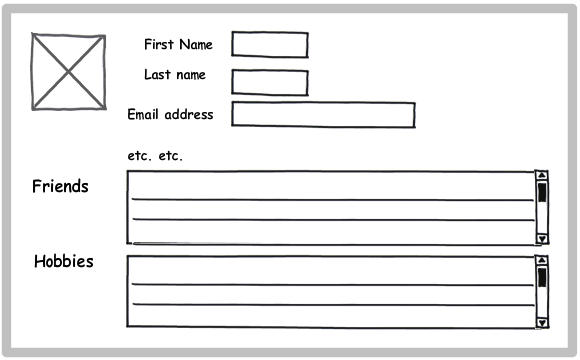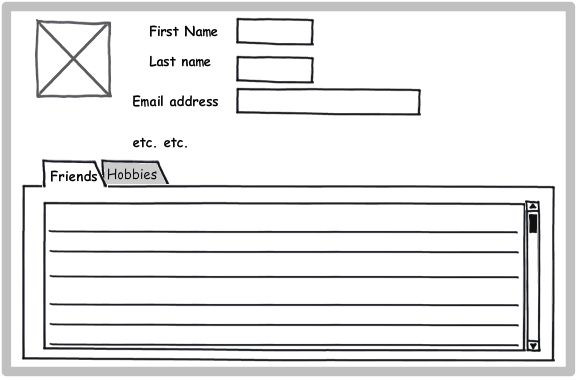Let's say I have a profile screen with two lists: one for Friends and another for Hobbies. This is just an example. It could as well be a Customer screen with Suppliers and Orders. I'm looking to discover the pros and cons of different patterns to solve a common problem.
Solution A: Display everything on a scrollable page
(The lists themselves do not scroll, though they may be paged if they are excessively long)
Solution B: A screen with two scrollable list boxes
(The screen does not scroll)
Solution C: A screen with a tab for each list
(The screen does not scroll)
Notes
Solution A is the typical approach for a web application, while B and C are common in desktop apps. I'm researching approaches for a rich client application which can use either model. What is the expected convention is less important to me; I'm interested in which pattern is superior from purely a usability standpoint.
My observations so far:
A emphasizes the content, while B and C emphasize the structure of the information. With A, the user may not realize that
Hobbiesare available until he scrolls the screen.A allows the user to see more of the specific information (he can see a whole screen full of
Friends). B and C allow him to see less information, but see it in context (the top portion of theProfilenever gets scrolled out of view).B ensures that the user will see at least some of both
FriendsandHobbieswithout having to do anything else (scroll or click).If there are only a few
FriendsandHobbies, A becomes essentially equivalent to B. If there are lots ofFriendsandHobbies, B requires the user to scroll two areas of the screen. C will always require user action to seeHobbies.
What are your thoughts?
Thanks for your feedback!
